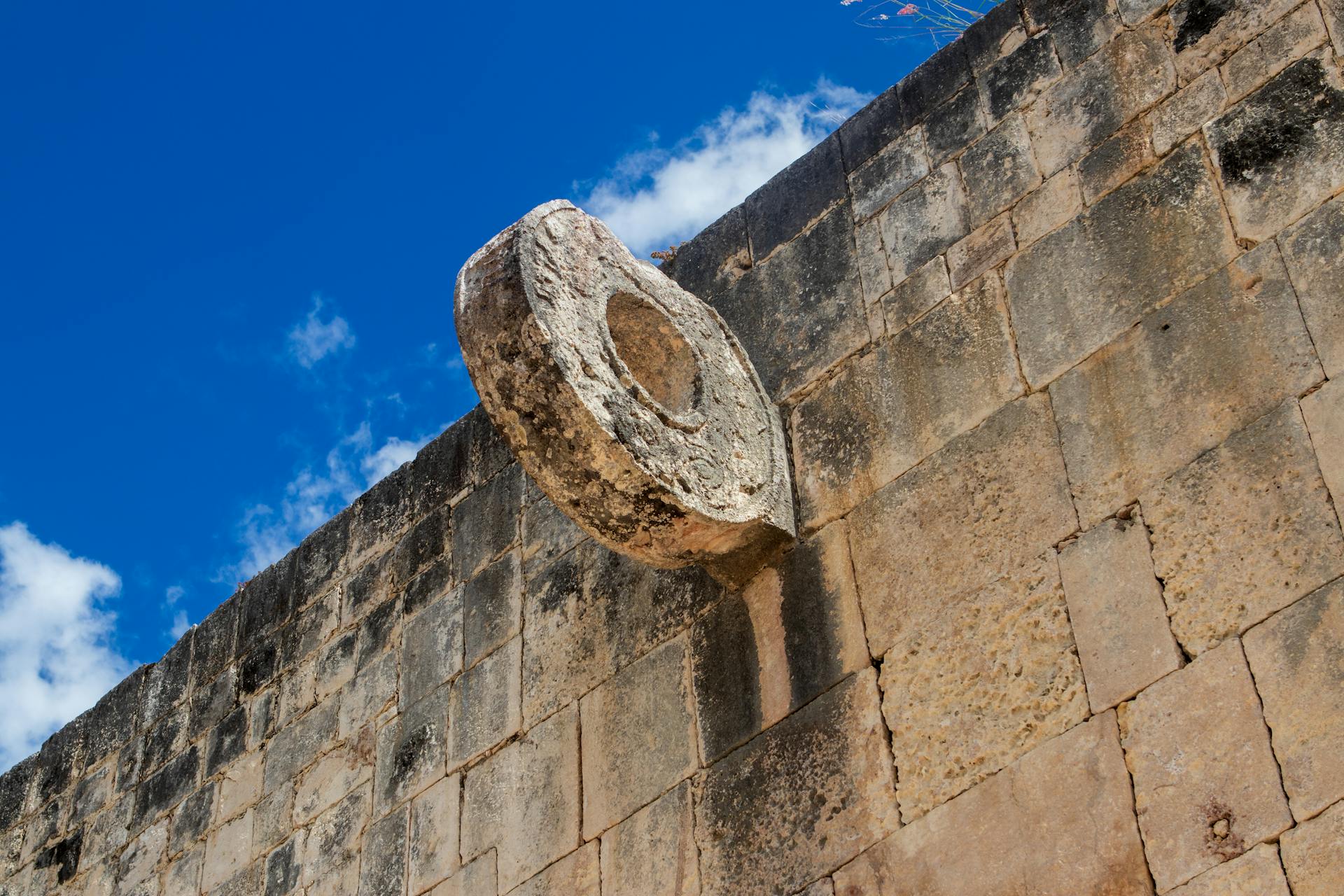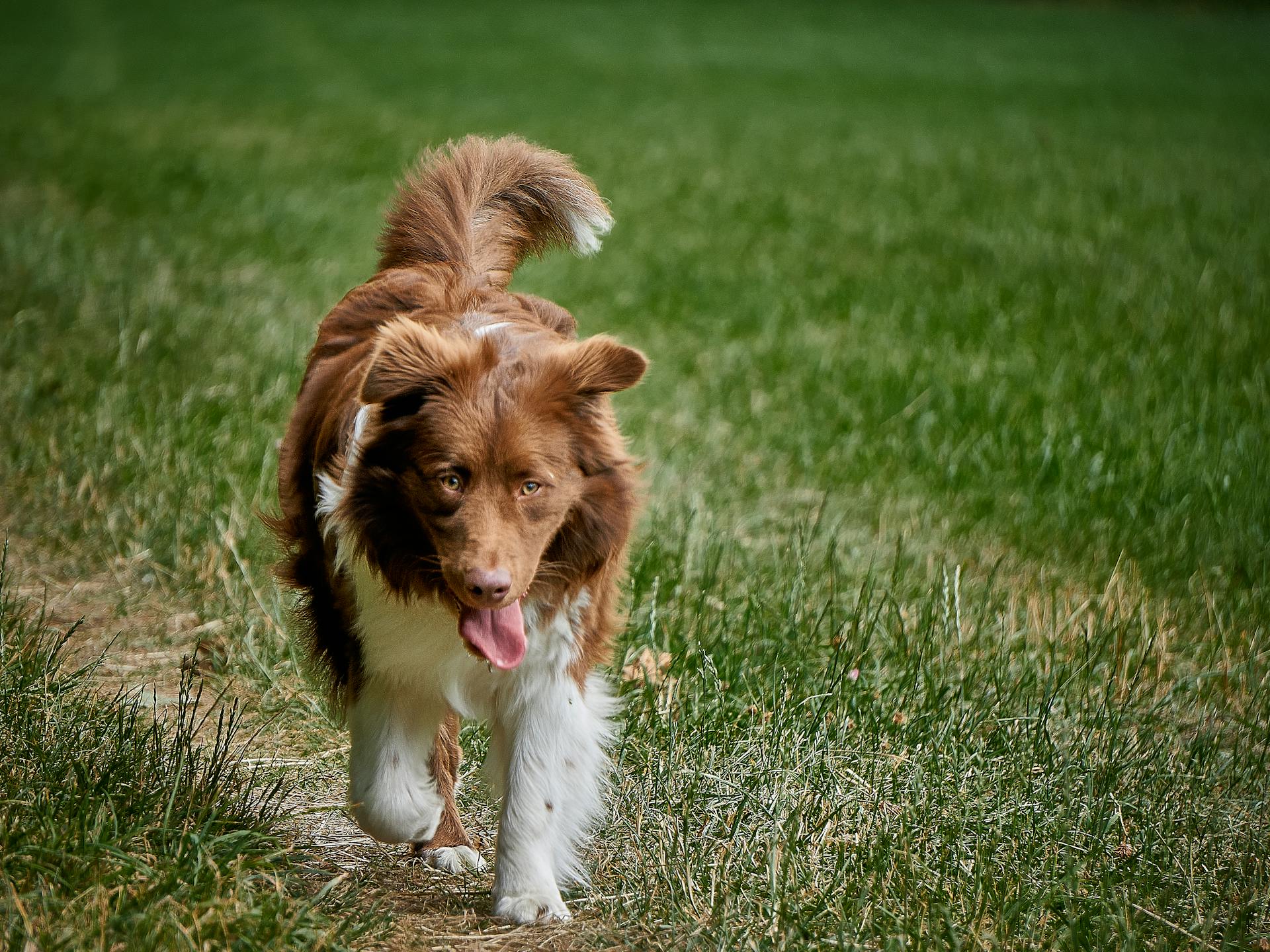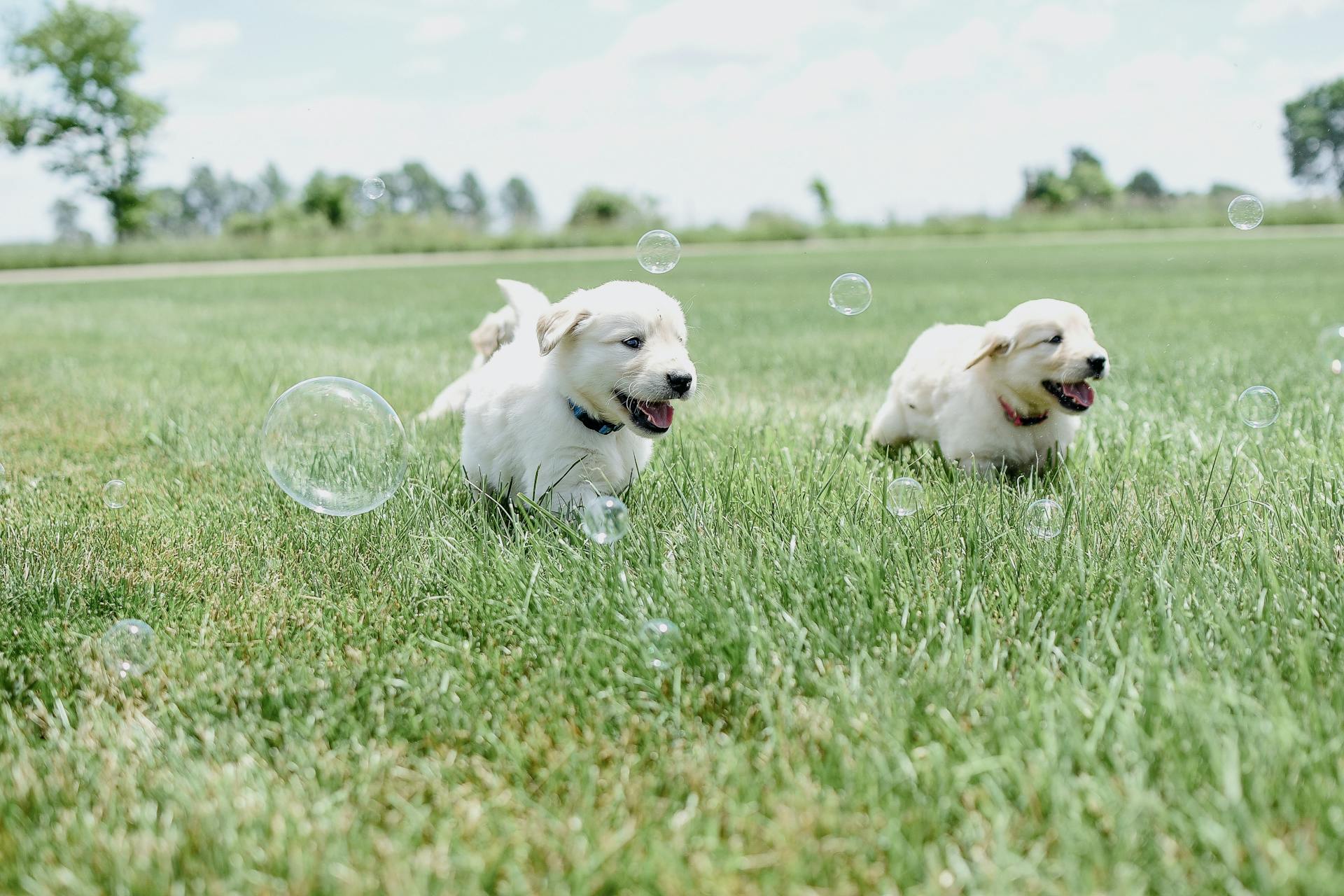
The Moyan Aussiedoodle is a cross between an Australian Shepherd and a Standard Poodle, designed to create a low-shedding companion dog.
This breed is often sought after by those with allergies, but it's essential to understand the allergy considerations before bringing a Moyan Aussiedoodle home.
Moyan Aussiedoodles are often considered hypoallergenic due to their Poodle heritage, but they still require regular grooming to prevent matting and tangling.
They are highly intelligent and trainable, making them a great choice for active families or individuals who can provide regular exercise and mental stimulation.
Breed Characteristics
Moyan Aussiedoodles come in a range of sizes, typically weighing between 25-75 pounds, which is classified as miniature, moyen, or standard.
Their adult size is largely dependent on the size of the parent dog, which can be a Toy, Miniature, Moyen, or Standard Poodle.
These dogs have a moderate to high activity level, requiring lots of exercise, but also happy to chill on the couch with you.
Curious to learn more? Check out: Aussiedoodle Growth Chart
Their colors vary from solids, to tri-colors, to Merle, with a range of colors including black, red, black tri, red tri, parti, and merle.
Merle is a pattern rather than a color, appearing as patches of light and dark colors mixed.
Grooming every 2-3 months is necessary, depending on the curl of their coat, with curlier puppies requiring more frequent grooming.
For more insights, see: Red Merle Aussiedoodle Puppies
What Are These Breeding Terms
The world of dog breeding can be overwhelming, especially with all the different generation lingo floating around. The "F" in F1, F2, F1B, etc. stands for Filial Hybrid, which means the dog is a crossbred between two purebred breeds.
In the case of Aussiedoodles, the "F" is always present because they're a hybrid between the Australian Shepherd and the Poodle. This means they can't be registered with the American Kennel Club (AKC).
The number that follows the "F" indicates the generation of the dog. For example, an F1 Aussiedoodle is the offspring of an Australian Shepherd and a Poodle, making it a first-generation Aussiedoodle.
You might like: Aussiedoodle vs Australian Shepherd
The letter that comes after the number can be a bit more complicated. In the case of an F1B Aussiedoodle, the "B" stands for Backcross, which means the dog was bred back to a purebred Poodle. This is often done to create a non-shedding, hypoallergenic coat.
Aussiedoodles can come in different generations, each with its own unique characteristics. F1 Aussiedoodles, for instance, are 50% Poodle and 50% Australian Shepherd, while F1B Aussiedoodles are 75% Poodle and 25% Australian Shepherd.
The size of Poodles can also vary, with the Klein/Moyen Poodle being a standardized size in Europe. This size is achieved by breeding a purebred Poodle, making the offspring's size consistent.
Intriguing read: Aussiedoodle F1b
Breed Characteristics
Aussiedoodles come in a variety of sizes, ranging from 25-75 pounds, classified as miniature, moyen, or standard. This is due to the size of the parent dog, typically the Poodle, which can range from Toy, Miniature, Moyen or Standard.
They have a moderate to high activity level, requiring lots of exercise but also happy to chill on the couch with you. Aussiedoodles are a great choice for families with young children, as they are small enough to cuddle on your lap and large enough to enjoy outdoor adventures.
Recommended read: Mini Aussiedoodle vs Standard

Their colors vary from solids, to tri-colors, to Merle, which is a pattern rather than a color. Merle appears as patches of light and dark colors mixed, and can appear on any of the colors mentioned.
Aussiedoodles come in different generations, including F1, F1b, F2, F2b and multi-gen. The F1 generation is achieved by breeding an Australian Shepherd and a Poodle, and is thought to be the best in terms of health benefits.
Grooming requirements for Aussiedoodles depend on the curl of their coat, with curlier puppies requiring grooming every 2 months, and wavy puppies every 3 months.
A unique perspective: Aussiedoodle Mini Puppies
Allergy Considerations
If you or a family member suffers from mild to moderate pet allergies, you'll be happy to know that Moyan Aussiedoodles are a great option. They're not considered hypoallergenic, but they are allergy friendly.
Their low-shedding coat makes them a suitable choice for those with allergies, as they produce fewer allergens than other breeds. This means you can enjoy the companionship of a Moyan Aussiedoodle without worrying about triggering severe allergic reactions.
Training and Care
The Moyan Aussiedoodle is a very smart breed, said to be the "Einstein of dogs" due to its high intelligence and trainability.
With regular exercise and mental stimulation, these dogs can thrive and become wonderful companions. They need daily walks and playtime to keep them happy and healthy.
Aussiedoodles are relatively easy to train, with a strong desire to please their owners and learn new commands. They are ready to take instructions from their owners from an early age.
Their high intelligence also means they can get bored or destructive if left alone for too long, so it's essential to provide them with engaging activities and toys when you're away.
Aussiedoodle Types
The F3 Aussiedoodle, also known as the multi-gen Aussiedoodle, is a 3rd generation or greater of Aussiedoodles bred together.
This generation is typically bred with an F1B Aussiedoodle and another F1B Doodle, or with an F3 Aussiedoodle and another F2 Aussiedoodle.
F3 Aussiedoodles contain a significant portion of Poodle genetics, making them great for people with pet allergies.
Their coat can vary from wavy to very curly, which makes them less prone to shedding hair.
Multi-generation Aussiedoodles describe any Aussiedoodle beyond the 2nd generation, including F1BB, F2B, and F2BB Aussiedoodles.
For more insights, see: F1b Aussiedoodle Black
F3 Aussiedoodle
The F3 Aussiedoodle is a third-generation or greater Aussiedoodle bred together. This generation is also known as the multi-gen Aussiedoodle.
F3 Aussiedoodles are typically bred with an F1B Aussiedoodle and another F1B Doodle, or an F3 Aussiedoodle with an F2 Aussiedoodle and another F2 Aussiedoodle. They contain a significant portion of Poodle genetics.
Their coat can vary from wavy to very curly, which makes them less prone to shedding hair. This is great for people with pet allergies.
The F3 Aussiedoodle generation is often used to describe any Aussiedoodle beyond the 2nd generation, which includes some of the Aussiedoodle generations listed above like F1BB, F2B, and F2BB.
Take a look at this: F2 Aussiedoodle
F1
The F1 Aussiedoodle is a cross between a purebred Poodle and a purebred Australian Shepherd. This generation of Aussiedoodle is often the starting point for breeding programs.
The F1 Aussiedoodle is 50% Poodle and 50% Australian Shepherd, making it a great option for families who want a low-shedding dog. However, it may still shed some, depending on the individual dog.
F1 Aussiedoodles are often considered to be the most energetic of the Aussiedoodle generations, inheriting the high energy levels of the Australian Shepherd. They require regular exercise and mental stimulation to prevent boredom.
Breeders often choose to breed F1 Aussiedoodles with other F1 Aussiedoodles to create the next generation of Aussiedoodles. This process can take several generations to achieve the desired traits.
Suggestion: F1 Mini Aussiedoodle Full Grown
Frequently Asked Questions
What is the downside to Aussiedoodles?
Aussiedoodles require regular exercise and grooming due to their high energy level and thick coats. They also need mental stimulation to keep their intelligent and energetic personalities happy and healthy.
How much should an Aussiedoodle cost?
An Aussiedoodle's cost ranges from $1,200 to $4,000, influenced by factors like age, coat color, and genetics. Prices vary, but understanding these individual factors can help you determine a fair price for your new pet.
Featured Images: pexels.com


